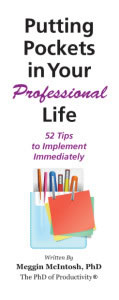Teaching Strategies by Linda L. Carr
 Research indicates that students need to do more than just listen to make learning meaningful. While activities such as reading, writing, discussing, or engaging in solving problems are important, engaging in higher-order thinking tasks such as analysis, synthesis, and evaluation is critical. These teaching tips will highlight instructional strategies for promoting active learning that involve students in doing things and thinking about what they are doing.
Research indicates that students need to do more than just listen to make learning meaningful. While activities such as reading, writing, discussing, or engaging in solving problems are important, engaging in higher-order thinking tasks such as analysis, synthesis, and evaluation is critical. These teaching tips will highlight instructional strategies for promoting active learning that involve students in doing things and thinking about what they are doing.
-
Connect new information to former knowledge. Learning is accelerated when it builds on what the student already knows. Teachers of excellence help students learn by providing “learning bridges” or “scaffolds” that connect new content with what students already know.
- Survey the students. Take a short survey at the beginning of the class to assess students’ knowledge. Ask students for evidence to support their responses.
- Ask questions that stimulate critical thinking. Assess the cognitive level of your questions. If you tend to ask questions that require simple recall of facts (Knowledge) or understanding (Comprehension), review Bloom’s taxonomy to familiarize yourself with higher order thinking skills (application, analysis, synthesis, and evaluation).
- Utilize “think-pair-share” encounters to increase understanding. Ask a question, then have students pair with another classmate to answer the question. When students think about and discuss class material, they process the ideas more thoroughly and construct for themselves extensive cognitive networks connecting the new ideas together and linking them to what they already know.
- Provide a practical problem that small groups of students can solve using class content. Create small groups of students and have them make a decision or answer a focused question that solves practical problems related to the content they are studying.
- Ask for a summary of the material. At various points during the class, ask a student to give a summary of the points just discussed. This strategy promotes “active” listening and helps students remember the content.
- Encourage authentic dialogue using multiple venues. Provide opportunities for students to engage in authentic dialogue with individuals–other than their classmates–who are knowledgeable about the subject (on the web, by email, or live).
- Play Devil’s advocate. Challenge your students’ argument, key points, and supporting evidence.
- Ask students to think about their thinking (metacognition). Prompt and support students in planning, monitoring, and evaluating their own thinking. For example, after a quiz, ask students, “What went well, what was hard, and how could I handle what was hard better next time?”
- Ask students to generate questions based on the information. When students ask questions they are actively involved in processing the information during lecture and presenting it in new ways.
In summary, active learning is something STUDENTS DO in the learning process that aids their understanding. Instructional strategies alone are insufficient to promote active learning and/or critical thinking. Optimum environments for learning can be created by selecting and using active teaching methods. Teachers need to increase their awareness of HOW they process and structure information so that they can more explicitly model and translate these skills to their students.
Reference
1 ED340272 Sep 91 Active Learning: Creating Excitement in the Classroom. ERIC Digest. ERIC Clearinghouse on Higher Education, Washington, D.C.; George Washington Univ., Washington, D.C.
© Linda L. Carr, Ph.D., Faculty-Ed Solutions, LLC
 And for strategies to help put pockets of time into your writing, check out Putting Pockets in Your Professional Life: 52 Tips to Implement Immediately. This booklet is for professionals who are frequently rushing from meeting to meeting, promising and then not delivering, or wondering if they will ever “catch up.” In this booklet, readers will find tools to support them in our often-crazy world so that they can live their professional lives more peacefully and productively.
And for strategies to help put pockets of time into your writing, check out Putting Pockets in Your Professional Life: 52 Tips to Implement Immediately. This booklet is for professionals who are frequently rushing from meeting to meeting, promising and then not delivering, or wondering if they will ever “catch up.” In this booklet, readers will find tools to support them in our often-crazy world so that they can live their professional lives more peacefully and productively.





